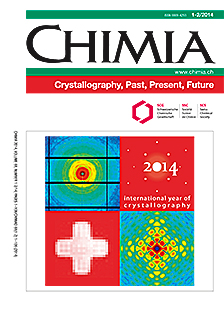Science Opportunities at the SwissFEL X-ray Laser
DOI:
https://doi.org/10.2533/chimia.2014.73Keywords:
Cross correlations, Free electron laser, Photochemistry, Pump and probe experiments, Single shot spectroscopy, X-ray diffractionAbstract
Next-generation X-ray sources, based on the X-ray Free Electron Laser (XFEL) concept, will provide highly coherent, ultrashort pulses of soft and hard X-rays with peak intensity many orders of magnitude higher than that of a synchrotron. These pulses will allow studies of femtosecond dynamics at nanometer resolution and with chemical selectivity. They will produce diffraction images of organic and inorganic nanostructures without deleterious effects of radiation damage.Downloads
Published
2014-02-26
How to Cite
[1]
B. D. Patterson, J. Szlachentko, B. Pedrini, L. Patthey, C. Milne, G. Ingold, C. Dejoiea, H. H. Braun, P. Beaud, R. Abela, Chimia 2014, 68, 73, DOI: 10.2533/chimia.2014.73.
Issue
Section
Scientific Articles
License
Copyright (c) 2014 Swiss Chemical Society

This work is licensed under a Creative Commons Attribution-NonCommercial 4.0 International License.







